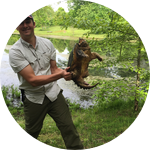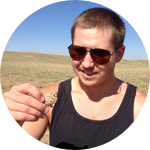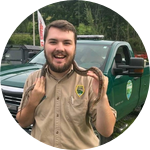About This Project
Salamander populations are currently a focus of conservation efforts due to population declines caused by issues such as habitat loss and fungal infections. The goal of this study is to understand how different habitat conditions effect salamander distributions in the Southern Appalachian Mountains. Specifically, I am interested in the effects of habitat conditions on salamander behavior, stress, and body condition.
Ask the Scientists
Join The DiscussionWhat is the context of this research?
The Southern Appalachian Mountains are among the top locations for salamander diversity in North America. Plethodontid salamanders are lungless, which strongly influences the habitats they can live in. In this project, I will study behavioral preference and physiological responses of salamanders to preferred and sub-optimal habitats. I hypothesize that preference for habitat condition will be influenced by exposure to predator stress and competition. In other words, salamanders will settle for sub-optimal habitat when they face biotic risks in their preferred habitat. Additionally, individuals forced to accept sub-optimal habitat will have higher levels of stress hormones and relatively poor body conditions in the long run.
What is the significance of this project?
Small changes in habitat could have a large impact on the ability of plethodontid salamanders to maintain their distributions. Factors such as competition are likely to exacerbate the problem. This study will provide new information about the linkage between physiological constraints and habitat in plethodon salamanders. A recent study demonstrated that “skin swabs” could provide reliable measurements for stress hormones in amphibians. My research will be the first to use this non-lethal method to address ecological questions. Additionally, no one has attempted to use bioelectrical impedance as a method for assessing body condition in salamanders. Demonstrating the use of these new techniques will be beneficial to future studies in plethodontid salamander conservation.
What are the goals of the project?
Data on temperature, humidity, and soil moisture will first be collected in known salamander habitat to determine microhabitat conditions. Microhabitat preference based on these conditions will then be determined in the mobile laboratory for two species of salamander that occur at different altitudes and experience different habitat conditions. I will then examine how biotic cues in combination with habitat conditions influence microhabitat choice and use a novel skin swab method to measure stress hormones in skin secretions as an indicator of physiological stress. Finally, I will use a non-lethal bioelectrical impedance assay to analyze body conditions of salamanders exposed to optimal and sub-optimal habitats for long periods in a mesocosm study.
Budget
Pop-up camper and building supplies
One of the species that I will be working with is classified as Greatest Conservation Need in Tennessee. Although the unique elevation restrictions of this species make it a crucial component of my study, the protected status restricts my ability to bring animals to the campus laboratory. Building a mobile laboratory will allow me to collect salamanders, conduct trials on site, and release them back to their original habitat.
Corticosterone assay kits
Corticosterone (CORT) is a hormone involved in stress response. A recent study by Santymire et al (in press) demonstrated that skin swabs could be used to determine CORT levels in salamanders. This is an exciting new method that can be used to determine stress levels without the need for any invasive procedures.
Endorsed by
 Project Timeline
Project Timeline
This study is a part of my PhD dissertation. While the experiments described in this proposal will take place in the spring and summer of 2018, the equipment listed for the budget will be utilized throughout my project.
Apr 04, 2018
Project Launched
Apr 30, 2018
Obtain microhabitat data
May 31, 2018
Have mobile lab fully functional, begin field experiments
Aug 15, 2018
Complete data collection for field experiments
Oct 31, 2018
Complete manuscript and submit for publication
Meet the Team
Trevor Chapman
I am a PhD student at East Tennessee State University. I am an avid outdoorsman, and my interest in amphibians began at a very young age spending my time creek stomping and fishing. I began studying amphibians during my undergraduate at Hanover College. Although I did not work with salamanders during my Masters, I am very excited to get back in to amphibian conservation and ecology.
Tyler Wicks
I am a student at East Tennessee State University in the Department of Biological Sciences. I enjoy spending time in the mountains of East Tennessee trout fishing, hiking, and herping. I am an avid salamander researcher. I believe they play a unique role in our environment and serve as indicator of its stability.
Project Backers
- 12Backers
- 100%Funded
- $1,501Total Donations
- $125.08Average Donation


